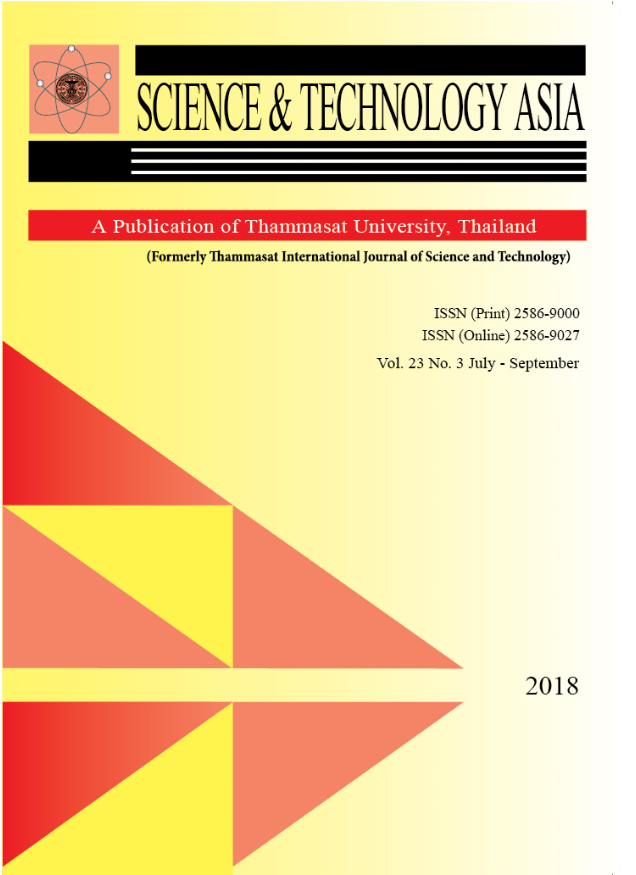A Study of Characteristics of Palm Oil Biomass by Using Torrefaction Process
Main Article Content
Abstract
This research aims to study on the impact of temperature, reaction time and particle size of biomass on the property of calorific value in 3 types of raw biomass including palm branches, balm fibres and palm shell, and to forecast the calorific value equations to study the impacts of palm branch, palm fibre and palm shell’s calorific values. The experiment was carried out by grinding all raw biomass to be sized of 3 mm with a weight of 10 g each, then treated them in the reactor under the torrefaction temperature of 220 °C, 260 °C and 280 °C with a range of time at 20, 40 and 60 minutes. After that, all torrefied biomass were analyzed of their calorific values by means of ultimate analysis and proximate analysis. The study presented its result that the maximization of temperature and reaction time made the calorific value higher. The ultimate analysis showed the calorific value of palm branches is higher than the calorific value of palm shells and palm fibers showed indifferent values for both analyses. However, the proximate analysis found palm shell possessed the highest calorific value.


